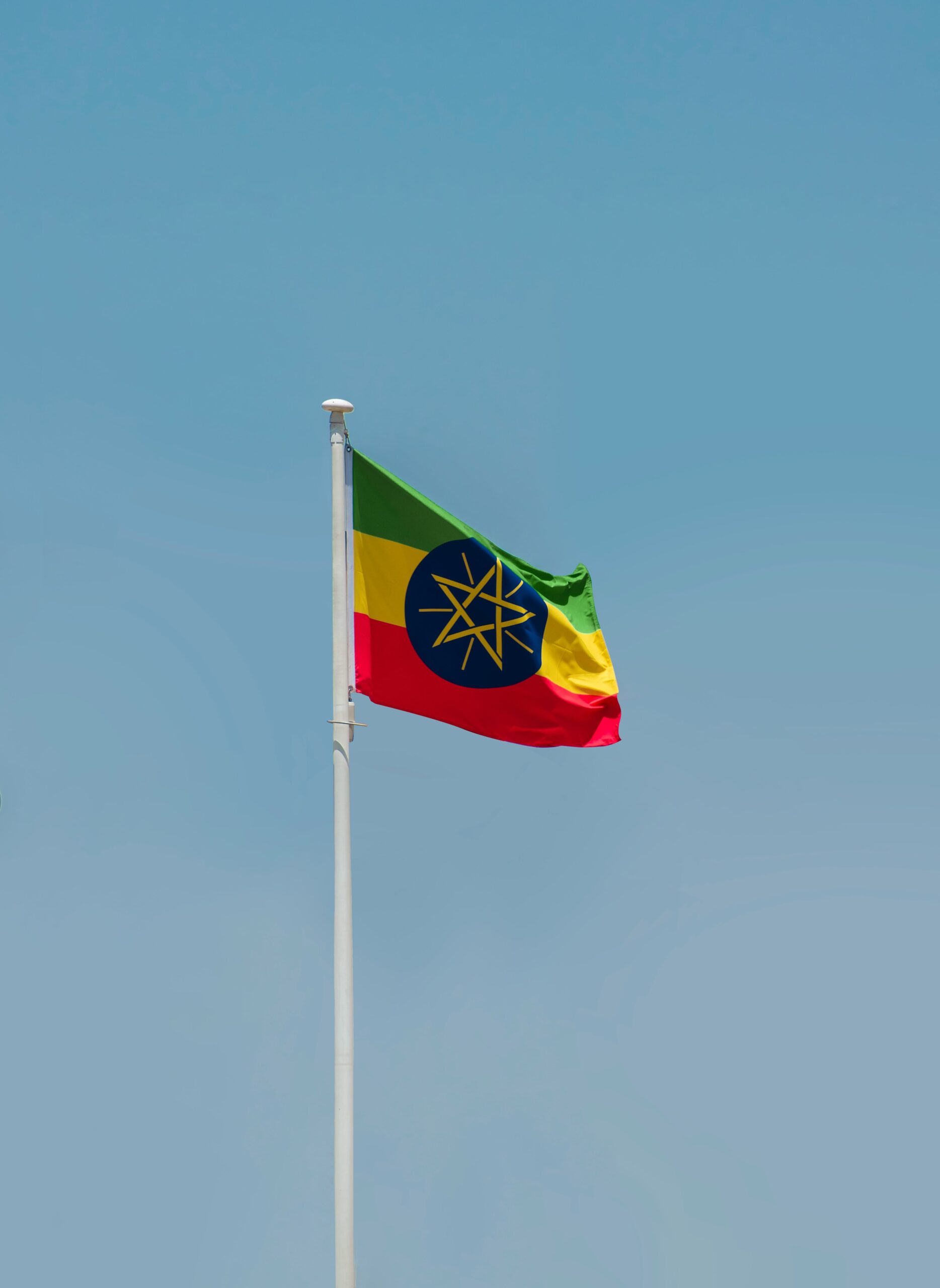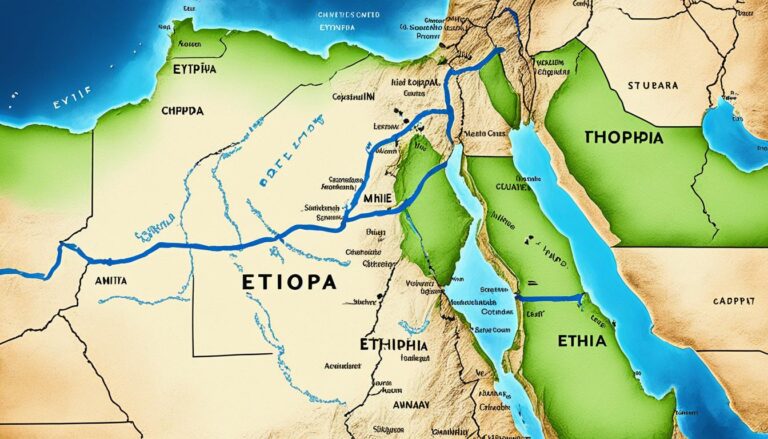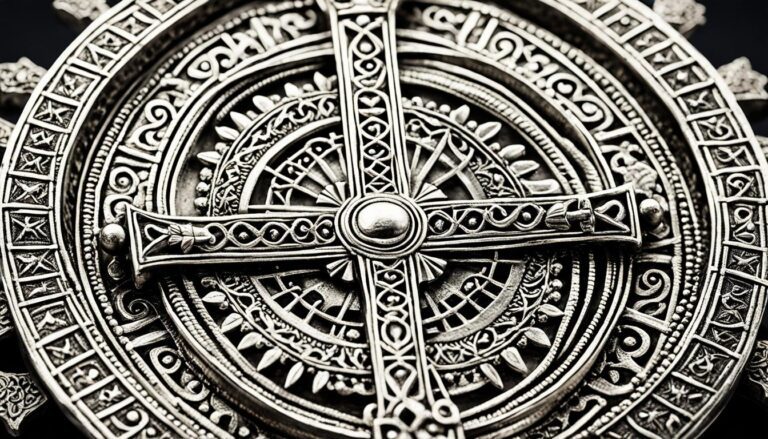What Is The Significance Of The Ethiopian Orthodox Church?
The Significance of the Ethiopian Orthodox Church
One of the oldest Christian denominations in the world, the Ethiopian Orthodox Church holds a significant and unique place in the history and culture of Ethiopia. Established in the 4th century A.D., the church has played a crucial role in shaping the religious, social, and political landscape of the country.
One of the most prominent aspects of the Ethiopian Orthodox Church is its strong connection to the ancient traditions of Judaism. The church’s religious practices, including dietary laws, circumcision, and observance of the Sabbath, reflect this historical link to the Old Testament. This connection sets the Ethiopian Orthodox Church apart from other Christian denominations and showcases the rich tapestry of its religious heritage.
Furthermore, the Ethiopian Orthodox Church has been a vital force in preserving the country’s cultural identity. Through its unique blend of Christianity and indigenous traditions, the church has been a focal point for artistic expression, literature, music, and dance. Its colorful religious ceremonies, vibrant icons, and distinctive chanting styles contribute to the rich cultural fabric of Ethiopia.
Moreover, the Ethiopian Orthodox Church has served as a unifying factor for the Ethiopian people throughout history. In times of political upheaval and social change, the church has provided stability and continuity, offering spiritual guidance and a sense of community to its followers. The church’s hierarchical structure, led by the Patriarch of Ethiopia, has been a symbol of authority and tradition for centuries.
Today, the Ethiopian Orthodox Church continues to play a crucial role in the lives of millions of Ethiopians both in the country and abroad. Its significance extends beyond religious boundaries, influencing various aspects of Ethiopian society, including education, healthcare, and social welfare. As a cornerstone of Ethiopian identity, the Ethiopian Orthodox Church remains a powerful and enduring institution that continues to shape the cultural landscape of the country.
Historical roots and traditions of the Ethiopian Orthodox Church
The Ethiopian Orthodox Church, one of the oldest Christian denominations in the world, has a rich history and deep-rooted traditions that date back to the early centuries of Christianity. Established in the 4th century, the Ethiopian Orthodox Church has a unique heritage that sets it apart from other Christian traditions.
The roots of the Ethiopian Orthodox Church can be traced back to the conversion of the Ethiopian eunuch by the apostle Philip, as recorded in the Acts of the Apostles. This pivotal moment in Ethiopian history laid the foundation for the establishment of Christianity in the region.
One of the defining features of the Ethiopian Orthodox Church is its strong connection to Judaism. The church adheres to many Old Testament practices and has preserved Jewish traditions that have been lost in other Christian denominations. This connection to Judaism is evident in the Ethiopian Orthodox Church’s observance of dietary laws, circumcision, and the keeping of the Sabbath.
The Ethiopian Orthodox Church also boasts a unique liturgical tradition that sets it apart from other Christian churches. The church’s liturgy is conducted in Ge’ez, an ancient Semitic language that is still used exclusively for religious purposes. This tradition adds a sense of mystique and reverence to the church’s worship services, making them a truly distinctive experience for believers.
In addition to its rich historical roots and unique traditions, the Ethiopian Orthodox Church also plays a significant role in Ethiopian culture and society. The church has been a pillar of Ethiopian identity for centuries, shaping the country’s art, music, and literature. Its influence extends beyond the spiritual realm, encompassing all aspects of Ethiopian life.
The historical roots and traditions of the Ethiopian Orthodox Church are integral to the church’s identity and play a crucial role in shaping the cultural and religious landscape of Ethiopia. The church’s longstanding heritage and distinctive practices make it a truly remarkable institution with a profound impact on Ethiopian society.
The Influence of the Ethiopian Orthodox Church on Ethiopian Culture and Society
The Ethiopian Orthodox Church holds a significant role in shaping the cultural and social fabric of Ethiopia. With its long-standing history and deep-rooted traditions, the Church has become an integral part of Ethiopian identity. One of the key ways in which the Ethiopian Orthodox Church influences Ethiopian culture and society is through its religious festivals and ceremonies.
The Church’s calendar is filled with numerous festivals that are celebrated with great fervor and enthusiasm throughout the country. These festivals not only hold religious importance but also serve as occasions for communities to come together, strengthen social bonds, and celebrate their shared heritage. One of the most widely known festivals is Timkat, the Ethiopian Orthodox celebration of Epiphany, which attracts large crowds and features vibrant processions and rituals.
Moreover, the Ethiopian Orthodox Church plays a central role in preserving traditional Ethiopian music, art, and architecture. The Church’s chanting and hymns, known as Zema, are integral to its worship services and have influenced the development of Ethiopian music. Additionally, the Church’s emphasis on religious iconography and intricate church designs has had a lasting impact on Ethiopian art and architecture.
In Ethiopian society, the Ethiopian Orthodox Church also acts as a moral compass, guiding individuals on matters of ethics, community involvement, and personal conduct. The Church’s teachings on compassion, charity, and humility are deeply ingrained in Ethiopian cultural norms and values. Many Ethiopians turn to the Church for spiritual guidance and support during times of joy, sorrow, or uncertainty.
Furthermore, the Ethiopian Orthodox Church has historically played a significant role in the country’s governance and politics. Traditionally, the Church and state were closely intertwined, with religious leaders wielding influence over political decisions and monarchs seeking the Church’s approval for their rule. Although Ethiopia is now a secular state, the Church continues to hold sway in certain aspects of public life.
The Ethiopian Orthodox Church’s influence on Ethiopian culture and society is pervasive and enduring. From its rich religious traditions to its social and political impacts, the Church remains a cornerstone of Ethiopian identity and heritage. As Ethiopia continues to evolve and modernize, the Ethiopian Orthodox Church will undoubtedly continue to shape and influence the country’s cultural landscape for generations to come.
The Unique Practices and Ceremonies within the Ethiopian Orthodox Church
Within the rich tapestry of the Ethiopian Orthodox Church, there are several unique practices and ceremonies that set it apart from other Christian denominations. These distinctive rituals have been passed down through generations, shaping the spiritual beliefs and cultural identity of the Ethiopian people.
One of the most notable practices within the Ethiopian Orthodox Church is the observance of ancient Jewish traditions, such as dietary laws and circumcision. These customs are deeply rooted in the church’s history and reflect the early influence of Judaism on Ethiopian Christianity.
Another significant aspect of the Ethiopian Orthodox Church is its vibrant liturgical calendar, which includes colorful festivals and ceremonies throughout the year. One such celebration is Timkat, the Feast of Epiphany, where elaborate processions, music, and prayers mark the baptism of Jesus in the Jordan River.
The Ethiopian Orthodox Church also places a strong emphasis on monasticism, with many monasteries scattered across the country. Monks and nuns adhere to a life of prayer, solitude, and service, following a strict daily routine that includes chanting of hymns, reading of scriptures, and manual labor.
Divine liturgy, known as the Holy Qurbana, is a central part of Ethiopian Orthodox worship. This ancient and elaborate service combines prayer, scripture readings, hymns, and the Eucharist, creating a sacred and reverent atmosphere that is deeply meaningful to the faithful.
One of the most visually stunning aspects of the Ethiopian Orthodox Church is its distinctive art and architecture. Churches and monasteries are adorned with colorful paintings, intricate carvings, and beautiful mosaics that depict biblical scenes, saints, and angels, reflecting the spiritual beauty and devotion of the Ethiopian people.
The unique practices and ceremonies within the Ethiopian Orthodox Church play a vital role in preserving the rich spiritual heritage and cultural identity of the Ethiopian people. These ancient rituals connect the faithful to their history, their ancestors, and their faith, creating a sense of continuity and belonging that is truly profound.
The Challenges and Opportunities Facing the Ethiopian Orthodox Church Today
The Ethiopian Orthodox Church, one of the oldest Christian denominations in the world, faces a unique set of challenges and opportunities in the modern era. The church has been an integral part of Ethiopian culture and society for centuries, but in recent times, it has encountered various obstacles that have tested its resilience and adaptability. At the same time, there are opportunities for the church to grow and evolve in response to the changing dynamics of the world around it.
One of the significant challenges facing the Ethiopian Orthodox Church today is the issue of religious tolerance and coexistence in a diverse and multicultural society. As Ethiopia becomes more interconnected with the global community, the church is confronted with the need to navigate different belief systems and practices while maintaining its core values and traditions. This challenge requires a delicate balance between upholding the teachings of the church and promoting interfaith dialogue and understanding.
Another pressing challenge for the Ethiopian Orthodox Church is the need to address internal divisions and tensions within its own community. As with any large religious institution, the church is not immune to disagreements and conflicts that can arise among its members. These internal challenges can threaten the unity and cohesion of the church, making it essential for church leaders to work towards reconciliation and harmony within the community.
Furthermore, the Ethiopian Orthodox Church must grapple with the impact of modernization and technological advancements on its religious practices and outreach efforts. In a rapidly changing world, the church must find ways to leverage new tools and platforms to reach a broader audience while staying true to its ancient traditions and rituals. Embracing technology can present both opportunities and challenges for the church as it seeks to remain relevant and accessible to its followers.
Despite these challenges, the Ethiopian Orthodox Church also has several opportunities to thrive and expand its influence in the 21st century. One of the key opportunities for the church lies in its rich cultural heritage and spiritual traditions, which continue to attract both Ethiopian and international audiences. By celebrating its unique identity and history, the church can position itself as a beacon of faith and cultural pride for generations to come.
Moreover, the Ethiopian Orthodox Church can seize the opportunity to play a more active role in addressing social and economic issues facing Ethiopian communities. As a prominent institution with a vast network of followers, the church has the potential to mobilize resources and support initiatives that promote social justice, education, and healthcare for those in need. By leveraging its influence and resources, the church can make a significant impact on the well-being of Ethiopian society.
While the Ethiopian Orthodox Church faces various challenges in the contemporary world, it also stands at a crossroads of opportunities for growth and development. By addressing internal divisions, embracing technological advancements, and leveraging its cultural heritage, the church can navigate the complexities of the modern era while staying true to its ancient roots and values. As the church continues to evolve, it has the potential to shape the future of Ethiopian society and make a lasting impact on the lives of its followers.
Conclusion
The Ethiopian Orthodox Church is an integral part of Ethiopian history, culture, and society, with deep-rooted significance that extends beyond religious rituals. Its historical roots dating back to the early centuries AD, combined with unique practices and ceremonies, have provided a sense of identity and continuity for Ethiopians throughout generations. The Church’s influence on Ethiopian culture and society is profound, shaping art, music, literature, and daily life practices. The faith has instilled values of community, compassion, and resilience among its followers, fostering a strong sense of unity and belonging.
The Ethiopian Orthodox Church’s traditions and teachings have played a vital role in preserving the country’s heritage and values. Its longstanding presence has intertwined with the fabric of Ethiopian society, acting as a unifying force during times of hardship and celebration. The Church’s emphasis on spirituality, prayer, and service has guided individuals and communities towards greater harmony and understanding. Through its rich history and cultural contributions, the Ethiopian Orthodox Church has cemented its place as a cornerstone of Ethiopian identity.
Unique practices and ceremonies within the Ethiopian Orthodox Church reflect a blend of ancient traditions and Christian beliefs. From colorful religious festivals such as Timkat (Epiphany) to intricate crosses and icons used in worship, each aspect carries symbolic meaning and spiritual significance. The Church’s liturgical chants, drumming, and incense rituals create a sensory experience that engages the faithful in a profound way, fostering a deep connection to their faith and heritage.
Despite its enduring legacy, the Ethiopian Orthodox Church faces both challenges and opportunities in the modern era. Issues such as religious freedom, political dynamics, and social changes present hurdles that require adaptation and resilience. The need to preserve traditional practices while embracing contemporary realities poses a delicate balance for the Church and its leadership. At the same time, increased global connectivity and awareness offer opportunities for the Ethiopian Orthodox Church to reach a wider audience and engage in dialogue with diverse communities worldwide.
As the Ethiopian Orthodox Church navigates these complexities, its significance remains unwavering. The Church’s ability to adapt while staying true to its core values embodies the resilience and strength of the Ethiopian people. By upholding its traditions, promoting unity, and fostering a sense of belonging, the Ethiopian Orthodox Church continues to play a pivotal role in shaping the cultural landscape of Ethiopia. Its impact reverberates through the past, present, and future, serving as a beacon of hope, inspiration, and spiritual guidance for generations to come.







